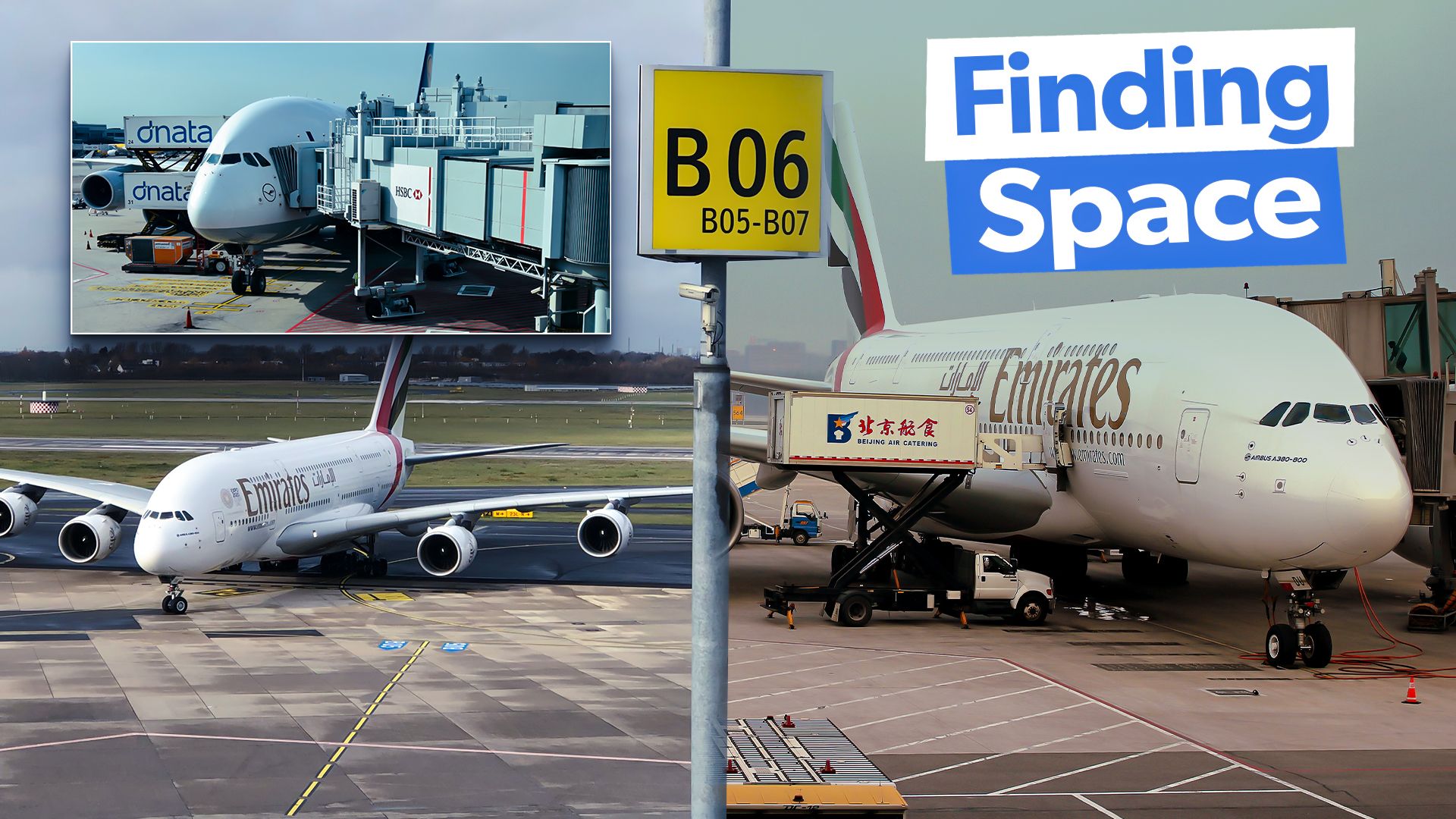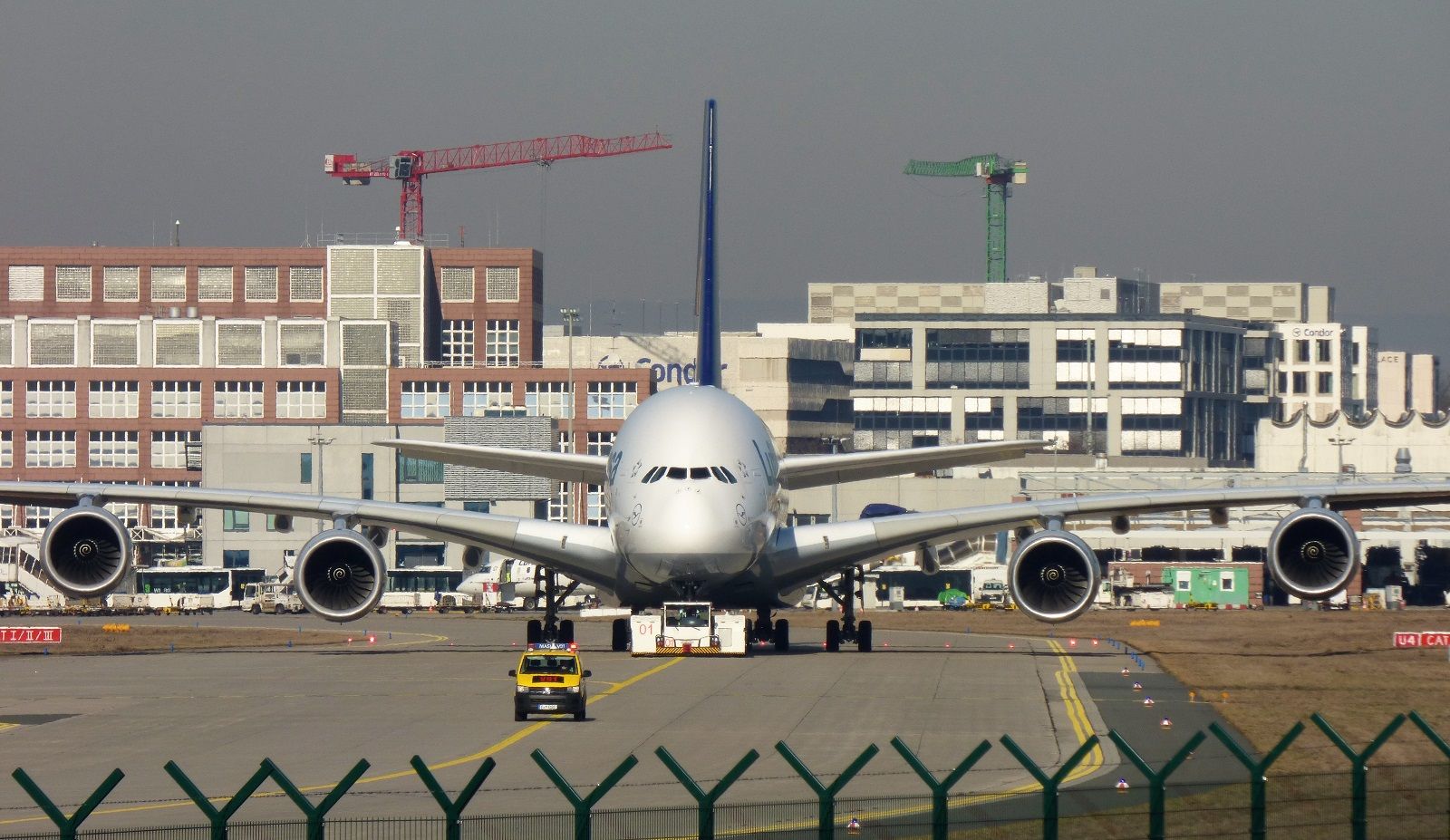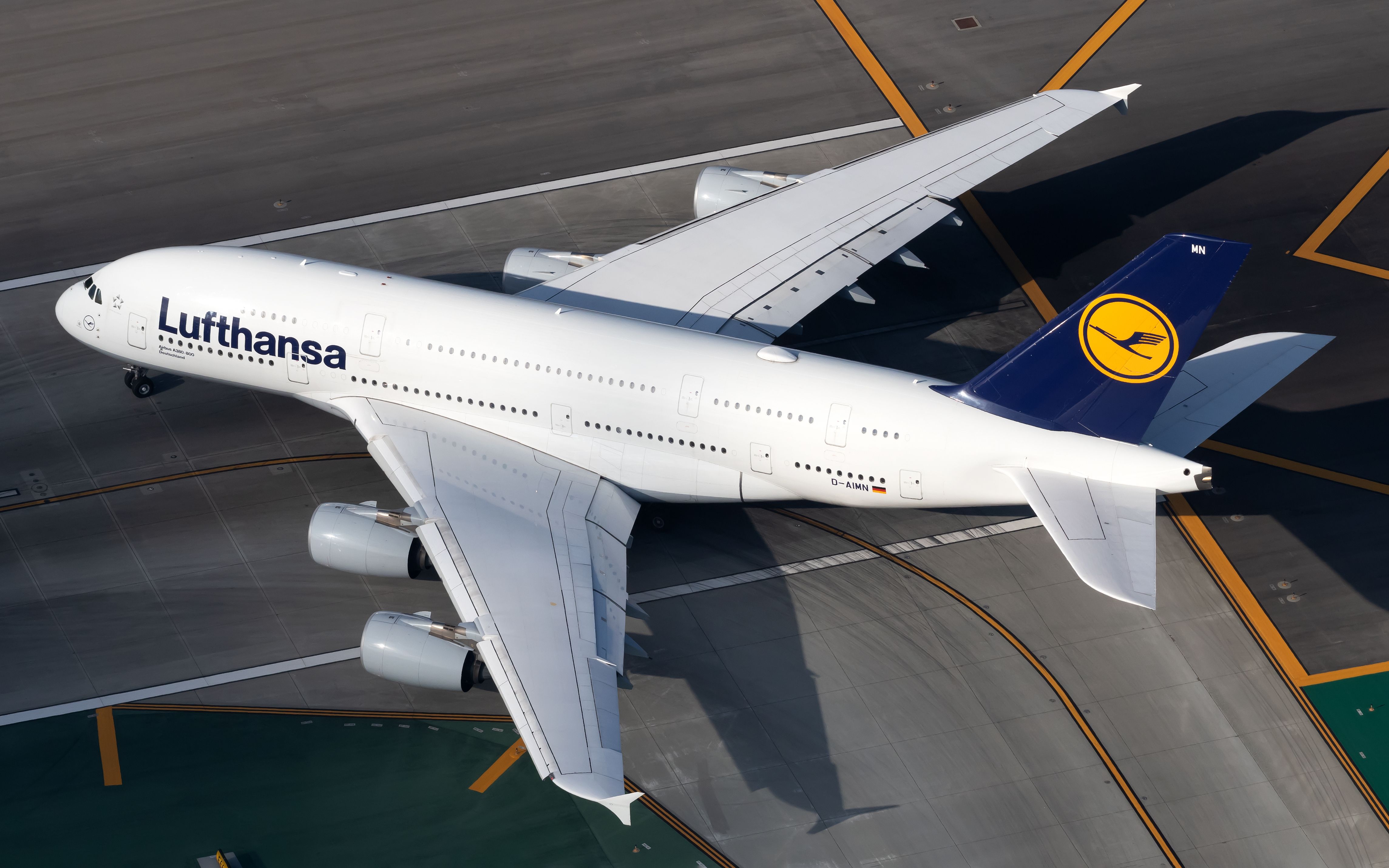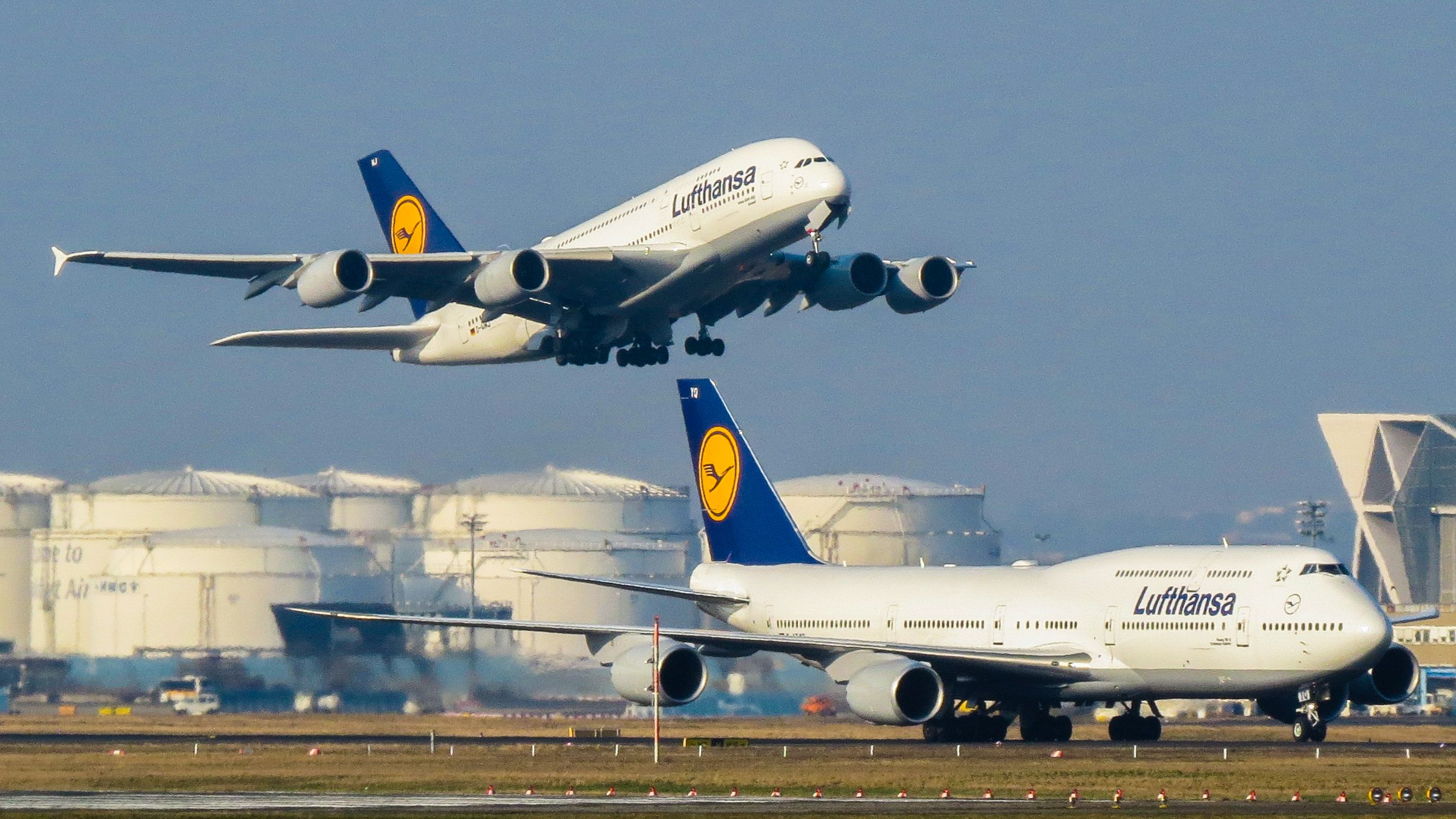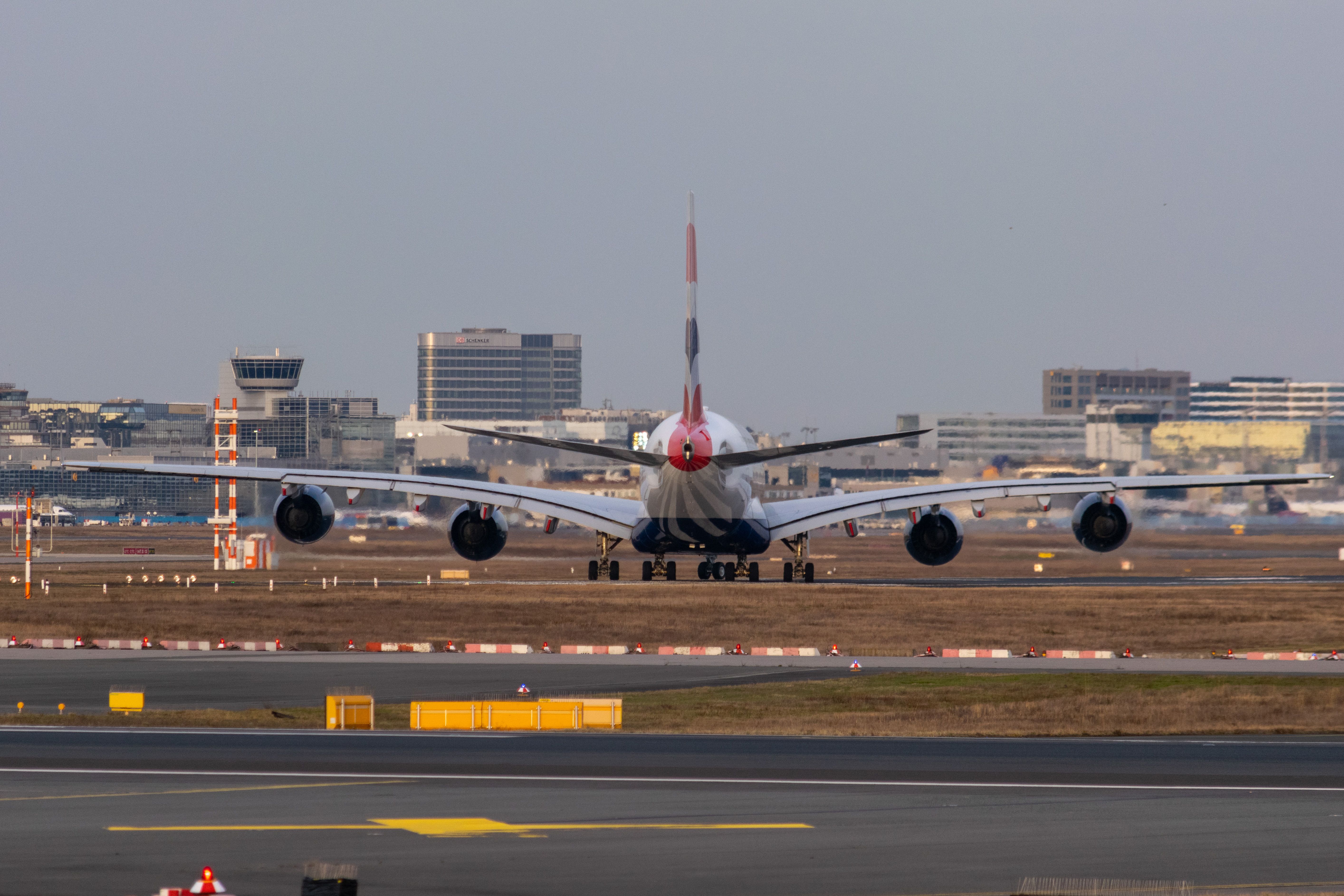Summary
- A380 requires costly airport infrastructural changes for safe operation and passenger accommodation.
- Frankfurt Airport and Glasgow Airport invested millions to adapt to the A380’s demands.
- Despite Airbus halting production, US airports worked quickly to accommodate the A380 for efficiency.
Since entering service in 2007, the iconic Airbus A380 has flown over 800,000 flights and carried more than 300 million passengers. With a wingspan wider than a football field and more seats than any other aircraft, the double-decker, widebody plane necessitates an enhanced runway, gate, and terminal infrastructure at many airports.
Some airports have implemented costly infrastructure changes to fully accommodate the massive aircraft and its large passenger load, typically exceeding 500 passengers. The costs for these updates reach the hundreds of millions, but airport officials feel the benefits of offering A380 service are worth the price.
Photo: Jake Hardiman | Simple Flying
Frankfurt Airport, a major hub for Lufthansa, made preparations to handle A380 operations by modifying its infrastructure and constructing a dedicated maintenance base. Similarly, Glasgow Airport invested in significant infrastructure updates, including installing Scotland’s only triple air bridge, to accommodate the A380 and meet the demand for flights to destinations like Dubai.
Airports and the A380
The Airbus A380 is the world’s largest passenger aircraft and the first modern jet with a full-length twin-deck. Its wingspan of 261 feet (80 meters) is only 39 feet (12 m) shorter than the length of a US football field, 69 feet (20 m) less than the length of a football/soccer field, and wider than either pitch size.
While over 400 airports can technically land and unload an A380 (using stairs away from the gate), only 140 airports are rated for regular A380 operation, and even fewer receive regular flights from the aircraft. Infrastructure changes must be made before an airport can safely accommodate such a large plane.
Changes needed for airports
Surprisingly, the A380’s weight is not an issue for most airports. The plane’s wheels are widely spaced to spread the heavy weight over a large area, meaning that the plane doesn’t cause any more stress to runways than a typical smaller aircraft.
These wide wheels, however, mean that airports must ensure their runways and taxiways are broad enough to accommodate the A380. Further, the plane’s huge wingspan requires ample space to swing past, meaning that buildings must be far enough away from the taxiways and gates the A380 uses.
Photo: Vincenzo Pace | Simple Flying
While the obviously needed alterations pertain to the A380’s size, airports must also consider the aircraft’s large passenger load. According to Airbus, the A380 typically accommodates over 500 passengers, with many airlines having up to 615 seats on their aircraft.
Although this benefits busy airports by providing immediate congestion relief, it also requires changes in many areas. Airports must consider how larger passenger loads will affect various aspects of operation, including immigration, passport control, ticket and gate counters, the boarding and deboarding processes, catering and cleaning services, and baggage.
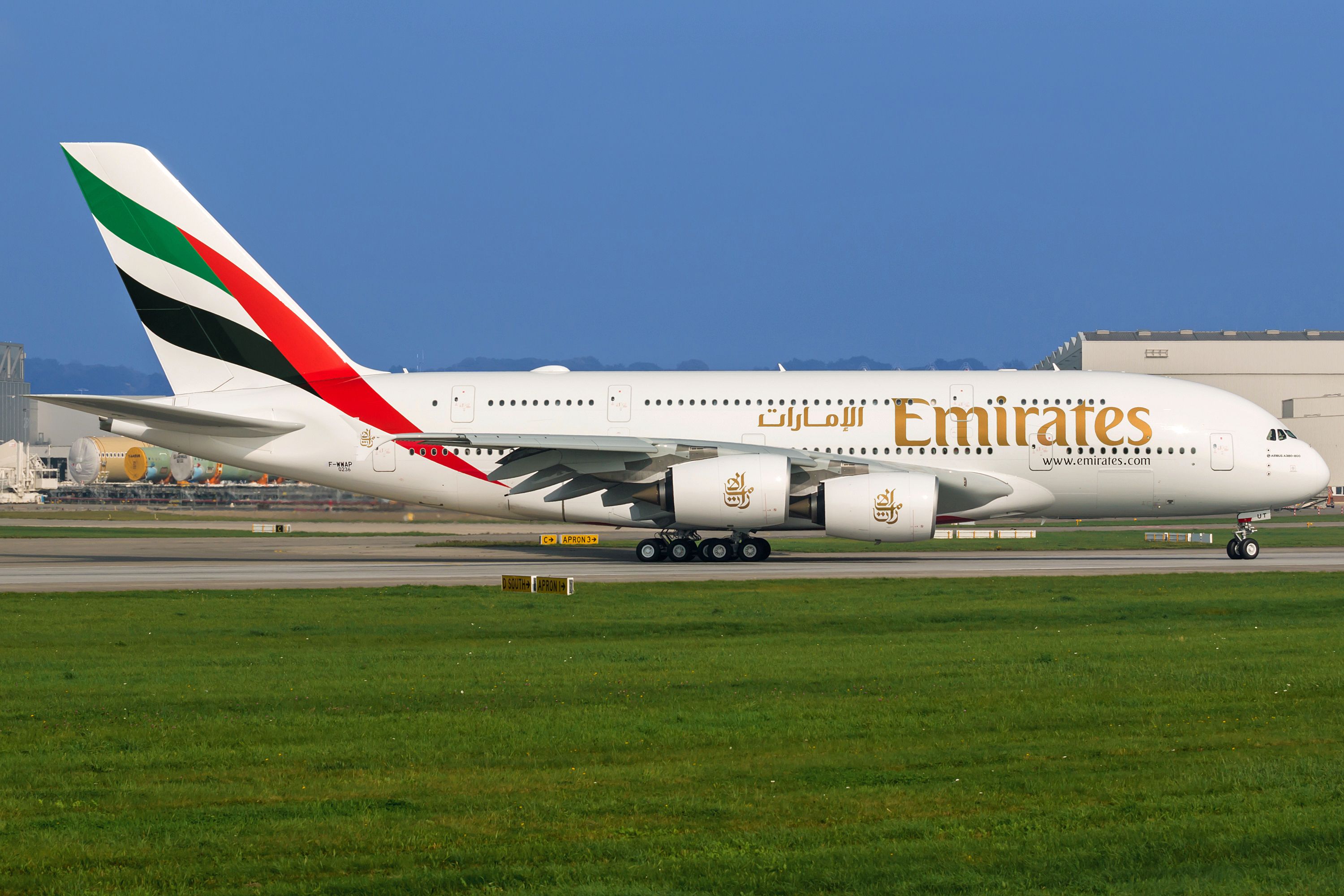
Related
Checklist: What Do Airports Need To Accomodate Airbus A380s?
Only 10 airlines are flying the Airbus A380 in 2023.
Frankfurt Airport and Lufthansa’s A380s
Frankfurt Airport (FRA) is Germany’s busiest airport by passenger travel and the sixth busiest in Europe. The airport is also the primary hub for Lufthansa, the world’s fourth-largest airline by revenue.
According to Airport Technology, Frankfurt Airport is the continent’s third-most important passenger hub, after London-Heathrow (LHR) and Paris (CDG). Because of this hub role, there is a high demand for airline departure and landing slots at FRA. The A380 helps the airport reduce this strain by carrying more passengers on a single trip than any other aircraft.
Before the airport could accommodate the A380 in 2007, Frankfurt Airport ensured its infrastructure was prepared. Fortunately, the north runway already had the necessary width and length, and all taxiways would allow for A380 operations.
In conjunction with stakeholders, Frankfurt Airport made calculated plans to prepare gates at multiple terminals for A380s. They aimed to make service with the Airbus as seamless as with the Boeing 747, the other group VI aircraft served by the airport.
Frankfurt Airport is the central European hub for Lufthansa and its Star Alliance international partners. The German airline also houses its maintenance center at FRA. Before receiving its A380 fleet in 2007, Lufthansa constructed a new maintenance base for the aircraft, covering approximately 25 hectares and costing over €150 million ($162 million).
Glasgow Airport helps Scots see Dubai
In 2014, Glasgow Airport (GLA) was the first Scottish airport to welcome an Airbus A380. Some might be surprised that this airport chose to make accommodations for the A380, but Glasgow experiences a high demand for flights to Dubai. According to the International Airport Review, Glasgow (GLA)–Dubai (DXB) is the country’s busiest long-haul route, with over 4.5 million passengers since 2004.
In preparation for the arrival of its first A380, GLA spent more than £8 million ($10 million) on infrastructure updates. These changes included new construction, runway, and taxiway modifications and safety improvements.
One of the critical projects was the installation of Scotland’s only triple air bridge, which allows for a smoother boarding and deboarding process for the 600+ passengers. Glasgow Airport also modified the aircraft stands adjacent to the A380 gate to ensure room for the aircraft’s extensive wingspan.
The A380 in the US
After the initial rollout of the A380, more airports worked to adapt to the changes and allow service to their cities. Although the infrastructure upgrades are expensive, most airports feel the aircraft’s efficiency and convenience make the cost worth the investment.
In the United States, airports quickly made changes to receive FAA approval to accommodate A380s and other future Group VI aircraft. This summer, the United States is third in the number of scheduled A380 flights, after the United Arab Emirates and the United Kingdom. According to the FAA, the US airports currently authorized to accommodate A380 operations are:
- ANC – Anchorage International Airport
- ATL – Atlanta Hartsfield International Airport
- BOS – Boston Logan International Airport
- DEN – Denver International Airport
- DFW – Dallas/Ft. Worth International Airport
- HNL – Honolulu International Airport
- IAD – Washington Dulles International Airport
- IAH – Houston Intercontinental Airport, Texas
- JFK – John F. Kennedy International Airport
- LAX – Los Angeles International Airport
- MCO – Orlando International Airport
- MEM – Memphis International Airport
- MIA – Miami International Airport
- ORD – Chicago O’Hare International Airport
- SDF – Louisville International Airport, Kentucky
- SFO – San Francisco International Airport
Photo: Tom Boon | Simple Flying
The A380 is a groundbreaking aircraft that has been praised by many for its economic and environmental benefits. The importance of this Airbus is evident in the way airports hastened to make plans for extensive updates specifically for the aircraft, some spending hundreds of millions on infrastructure changes.
Despite Airbus stopping production of new A380s, the aircraft will continue to play a major role at airports offering long-distance air travel. The A380 will remain in the skies for many years to come, offering passengers modern and sustainable travel on these enormous engineering marvels.
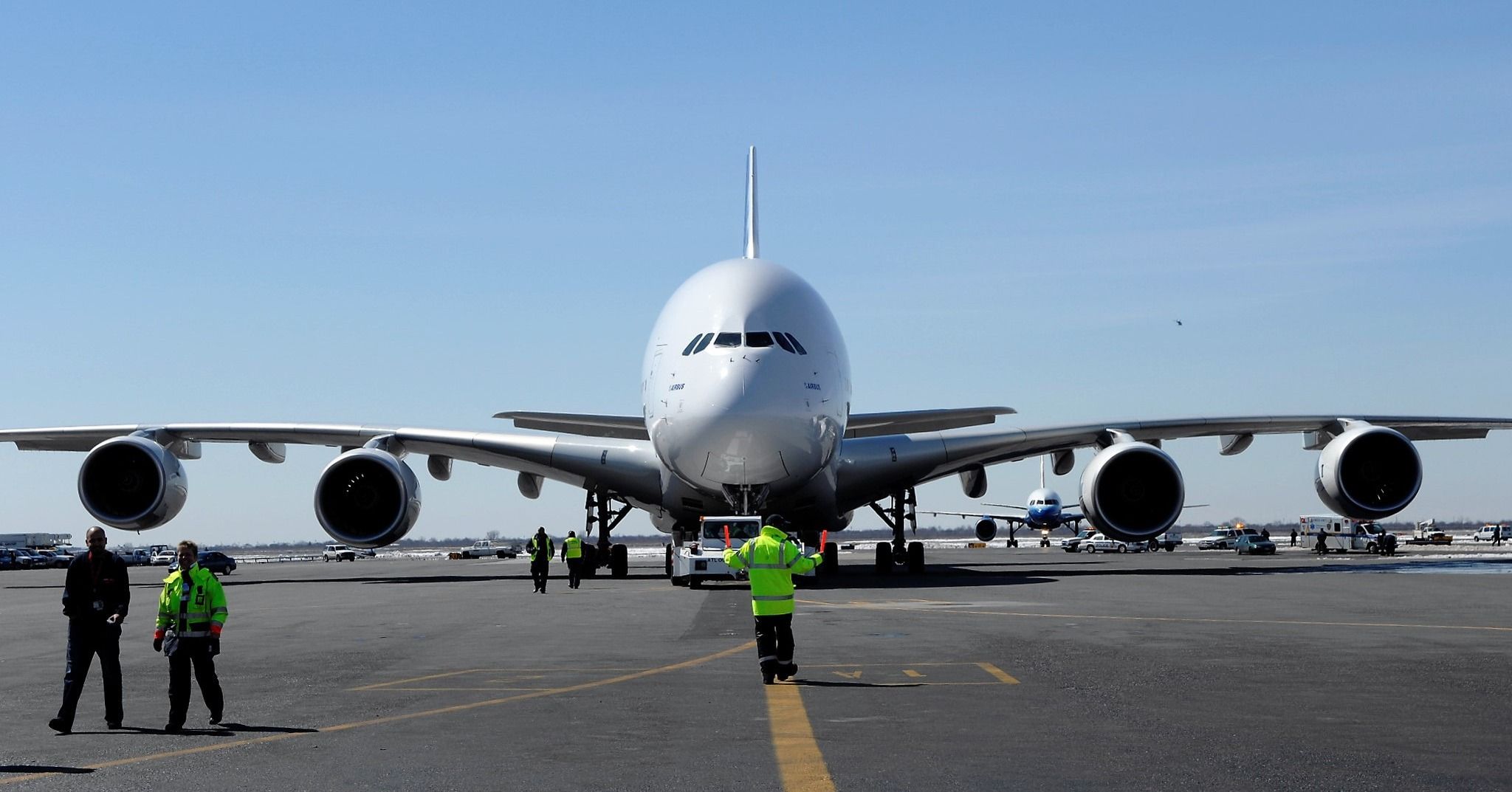
Related
How Many Airports Can Actually Handle The A380?
Let’s take a look at who can accommodate the superjumbo.
Have you ever flown on an A380? If so, tell us about your experience in the comment section.

